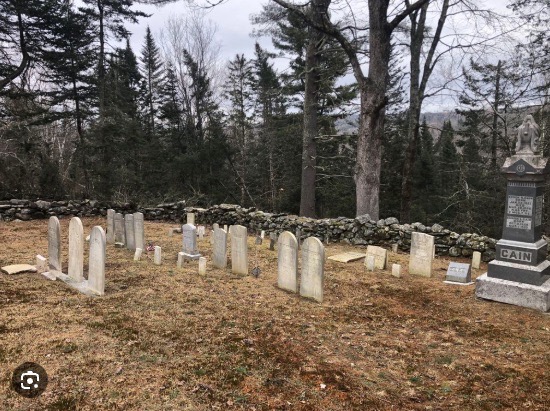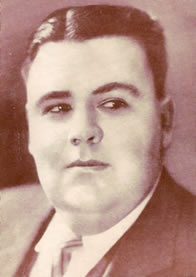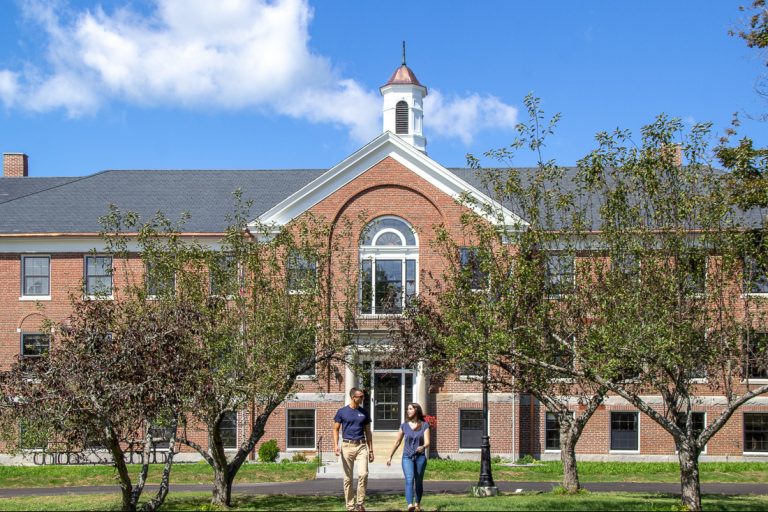
Dennis Hill Cemetery
As a break from trying to figure out which schoolhouse was in which end of town, your writer decided to profile some of the people mentioned in last week’s article about Palermo schools, starting with a sampling of the town’s first residents.
The result is the following tantalizing tangle of contradictions and unanswered questions.
* * * * * *
Milton Dowe, in his 1954 Palermo history, identified Stephen Belden, Sr., as the first settler, around 1778, and his son, Stephen, Jr., born in 1779, and daughter, Sally, born in 1780, as the first male and female children born in what became Palermo
Millard Howard, in his 2015 history, cited the “legend” Dowe repeated, including the 1778 approximate date. This “legend,” from an earlier history, says Belden came on horseback with a Bible under his arm.
But, Howard said, more likely Belden arrived in 1769, with his wife, Abigail (Godfrey) Belden and son Aaron. The couple had a second son, Stephen, Jr. (Howard calls him the first white child born in Palermo, in 1770) and four daughters.
The Find a Grave website says the Stephen Belden who settled in Palermo was born Feb. 14, 1745, in Hampshire County, Massachusetts, and died in Palermo June 15, 1822. Abigail was born in 1751 and died in 1820.
WikiTree offers significantly different information. This source lists Abigail as Abigail (Ramsdell) Belding, mother, rather than wife, of the Stephen Belding, or Belden or Beldon, born May 14, 1745, in Northfield in Hampshire Province, Massachusetts.
Wikitree says the 1745 Stephen who came to Palermo had two wives, Mary Mitchell (no information but the name) and Priscilla Oliver (born around 1745), whom he married May 19, 1768, in Georgetown. Priscilla bore him four children: Stephen V (implying the 1745 Stephen was Stephen IV, not Stephen, Sr.), Aaron, Priscilla and Abigail.
Wikitree says Stephen V (aka Stephen, Jr.) was born in 1769 in Lincoln, Massachusetts (perhaps Lincoln County in the Province of Maine, which then included Palermo?). Aaron was born in Lincoln on Feb. 23, 1770 (instead of before 1769). Priscilla was born about 1785 in Fairfax (Maine? but Albion did not become Fairfax until 1804); a note on the website says her information might not be correct. Abigail was born May 27, 1786, in Gardiner.
FamilySearch adds to WikiTree’s list three more Belden daughters: Sarah, born in 1775; Betsey, born April 4, 1776; and Susannah, born May 27, 1785, in Gardiner. This site agrees Priscilla was born in 1785 (no month or day listed), allegedly in Albion. Stephen IV, age 40, and Priscilla, age 34, are named as the parents of Priscilla and Susannah. (Twins plus wrong information would be one explanation.)
Howard said Betsy married surveyor Paul Chadwick, shot by an irate resident on Sept. 8, 1809, as he tried to survey for the Kennebec Proprietors during the so-called Malta War (see the March 7, 2024, issue of The Town Line). FamilySearch says her husband was Lot Chadwick, whom she married in Vassalboro Sept. 25, 1795, and by whom she had at least five sons and three daughters.
Howard wrote that Stephen, Sr., did not choose his Palermo homestead on the shore of Sheepscot Great Pond, as many others did, perhaps because he was a squatter and didn’t want the Kennebec Proprietors’ agents to find him. Instead, he built a log cabin “where Robert and Susie Potter raised their family in the later twentieth century.”
In 1794, Howard said, he relocated to near Belden Pond, in the eastern part of town. Aaron lived nearby for a while after his father moved; he moved again within Palermo in 1801 and in 1816 went to Ohio and became a minister.
Howard wrote that Stephen Belden – probably Stephen, Jr. or V, not first settler Stephen born in 1745 – was a private in Captain Moses Burleigh’s militia company, which spent a week in Belfast in September, 1814, in case the British attacked. There was no attack, but, Howard wrote, by making the march the man qualified as “veterans of the War of 1812.”
In 1835, Stephen, Jr., was on the District 6 school building committee; in 1847, that district’s school enrollment included 10 young Beldens, children of James, John and Stephen, Jr. (Were James and John Stephen, Jr.’s otherwise-unmentioned brothers? Or cousins?)
Enough other Beldens stayed in the area so that Howard wrote many 21st-century Palermo residents could trace their families back to Stephen and Abigail.
Palermo officials established the town’s first two cemeteries, Greeley’s Corner and Dennis Hill, in 1807, Howard said. By 1904, he said, the Dennis Hill cemetery was so badly maintained that a centennial speaker named D. W. Abbott complained, and reminded his audience that Stephen Belden was buried there, “in an unmarked grave.”
Embarrassed listeners promptly raised $100 and pledged another $100 for improvements.
Find a Grave lists two Beldens in Palermo’s Dennis Hill cemetery: Stephen, Sr. (Feb. 14, 1745 – June 15, 1822) and Abigail (Godfrey) (1751 – 1820). The website has photos of Stephen and Abigail’s gravestones.
And Priscilla?
* * * * * *
John Cain, listed by Dowe as an early settler who fathered 18 children, was born Feb. 15, 1764, in Augusta, son of Walter Cain and “Mrs. W. Cain” (FamilySearch); or April 15, 1765 (Find a Grave). On August 10, 1809, in Montville, he married Mary Longfellow, born in Palermo Aug. 10, 1785.
Mary was the daughter of Stephen (1760-1844) and Abigail (Greely) Longfellow (1766 – 1843). The Ancestry website offers Kane as an alternate spelling of her married name.
FamilySearch and Ancestry say Cain was Mary’s second husband. The first was Daniel Keaton (1755 – 1815, per Ancestry, or 1780 -1809, per FamilySearch; which says on a different page that he died “before 1809”).
FamilySearch offers Keaten or Caton as alternative names, the latter from the 1850 census, which said he lived in Augusta. This site says he and Mary were married about 1803 and had at least one daughter (Mary, 1804 – 1878) and one son (Miles, 1807 – 1865).
The Ancestry website lists three of John and Mary Cain’s children, Jacob, Sr. (1809 – 1897); Jonathan L. (1819 – 1897; Jonathan Sam, to FamilySearch); and Martha G. (1826 – 1880)
FamilySearch lists six sons and four daughters, all apparently born in Palermo. The first was Jacob L. Cain, Sr., born Nov. 5, 1809. This birth was less than three months after the wedding; if Daniel Keaton died in, rather than before, 1809, Jacob could have been his son, not John Cain’s.
John and Mary’s last son, FamilySearch says, was Page, born in 1824. Daughter Martha was born in 1826, and the couple’s last child, Eunice L., on Oct. 3, 1828 (when her father was 64 and her mother 43, FamilySearch says).
Your writer found no list with 18 children.
(Then there is the Geni website, which says Daniel Keaton married Mary Keaton-Cain. It lists six stepsons, four with the last name Cain and two Kanes, and four stepdaughters by their married last names. All were born after 1809.)
John Cain died Feb. 13, 1838, and Mary died Feb. 25, 1865, FamilySearch says. Both are buried in Palermo’s Cain Cemetery.
Find a Grave lists 17 Cains buried in this graveyard.

Cain Cemetery
* * * * * *
Another early settler with a large family, according to Dowe, was Amasa Soule, who he said fathered 13 sons and daughters.
Howard said Soule arrived from Duxbury, Massachusetts, in 1784, by way of Alna.
The website Geni offers Amasa A. Soule, youngest son of Capt. Ezekiel and Hannah (Delano) Soule. This source says Amasa A. was born “before August 15, 1748” in Duxbury and died in Palermo Aug. 30, 1852 (soon after his 104th birthday). There is no information about a wife or child.
Other websites offer Amasa Soule, born Nov. 2, 1761, in Duxbury, Massachusetts, or Woolwich, Maine, and died Aug. 30, 1852 or 1853, in Palermo.
This Amasa Soule married Susannah (or Susanna, on FamilySearch) Holbrook on Sept. 27 or Oct. 15, 1783, in Wiscasset. Susannah was born Nov. 17, 1759, in Pownal, and died in an unspecified Maine location in 1860.
FamilySearch lists 13 children; Find a Grave lists eight; WikiTree lists four. Here is the grand total:
— Ezekiel, born April 9, 1784, in Palermo (FamilySearch only)
— Daughter Abiah or Abial, born Oct. 8, 1785, in Woolwich (Find a Grave) or Palermo (FamilySearch).
— Joseph, born May 20, 1787, in Woolwich (Find a Grave) or Palermo (FamilySearch).
— Susan, born in 1789, FamilySearch says in Palermo.
— Hannah, born in Palermo March 14, 1791, and died there in November 1871, according to all three sites.
— Lucy, born Oct. 18 or 28, 1794.
— Nancy, Lucy’s twin by birthdate.
— William, born June 25, 1799; WikiTree says he was born in Winslow, Find a Grave says he was born in Palermo (and his wife’s parents were Winslow residents). FamilySearch says he was born in Massachusetts (perhaps confusing Lincoln County, Province of Maine, with Lincoln, Massachusetts).
— Samuel Riley, according to all three sites born Feb. 27, 1800, in Palermo, and died there Aug. 31, 1864.
— Richard (FamilySearch only), born Dec. 31, 1803.
— John (FamilySearch only), born about 1805, FamilySearch says in England, while listing his parents as Amasa and Susanna Soule.
— Eliza, according to WikiTree and FamilySearch, born in Palermo Sept. 28, 1805; or Ezekiel, according to Find a Grave, birth date unknown, died Jan. 5, 1866.
WikiTree says Eliza was born a Soule, on Sept. 28, 1805, and died in 1880. FamilySearch agrees and says she is buried in Palermo’s Smith Cemetery.
Find a Grave lists 15 Soules in that cemetery, including Amasa and Susannah; and Eliza Marden Soule, born Sept. 28, 1802, died Aug. 24, 1880; widow of Amasa and Susannah’s son, Samuel Riley.
Find a Grave says Ezekiel was the last Soule child, and Eliza was his wife. There are gravestones for each in Palermo’s Perkins cemetery; Eliza’s stone identifies her as Ezekiel’s wife.
FamilySearch adds a thirteenth child and seventh daughter:
— Mattie, born in 1807 (no additional information).
There is almost no information on line except dates of birth and death, marriages and children – nothing about occupations, for example. FamilySearch says Amasa Soule “registered for military service in 1779,” and was living in Lincoln in 1820. The latter information probably comes from a census record; your writer suspects the word means Lincoln County, not the town of Lincoln.
In 1847, Howard wrote in his Palermo history, Joseph Soule had six children attending Palermo’s Foye school on Level Hill Road, and Ezekiel had one child enrolled. That year, too, eight of Samuel’s children were on the Carr’s Corner school roster.
Howard listed Ezekiel, John and Joseph Soule among the militiamen who qualified as veterans of the War of 1812 by marching to Wiscasset and back in September 1814.
Main sources
Dowe, Milton E., History Town of Palermo Incorporated 1804 (1954).
Howard, Millard, An Introduction to the Early History of Palermo, Maine (second edition, December 2015).
Websites, miscellaneous.
 by Mary Grow
by Mary Grow









































 University of Maine at Augusta (UMA) Provost Joseph Szakas announces the Fall 2024 full-time president’s list and the Fall 2024 full-time dean’s list.
University of Maine at Augusta (UMA) Provost Joseph Szakas announces the Fall 2024 full-time president’s list and the Fall 2024 full-time dean’s list.

 You can protect your baby even before he or she is born by getting vaccinated against RSV while pregnant.
You can protect your baby even before he or she is born by getting vaccinated against RSV while pregnant. No Ride for Me
No Ride for Me Winslow Community Cupboard food pantry – which serves food-insecure children, seniors, and other adults from Winslow, Waterville, and 22 surrounding towns – will hold a Spaghetti Supper Fundraiser at Winslow Congregational Church, 12 Lithgow Street, on Saturday, March 1, from 4:30 to 7 p.m. A donation of $9.95 for adults and $4.95 for children under 12 is kindly requested. All proceeds will benefit Winslow Community Cupboard food pantry.
Winslow Community Cupboard food pantry – which serves food-insecure children, seniors, and other adults from Winslow, Waterville, and 22 surrounding towns – will hold a Spaghetti Supper Fundraiser at Winslow Congregational Church, 12 Lithgow Street, on Saturday, March 1, from 4:30 to 7 p.m. A donation of $9.95 for adults and $4.95 for children under 12 is kindly requested. All proceeds will benefit Winslow Community Cupboard food pantry.